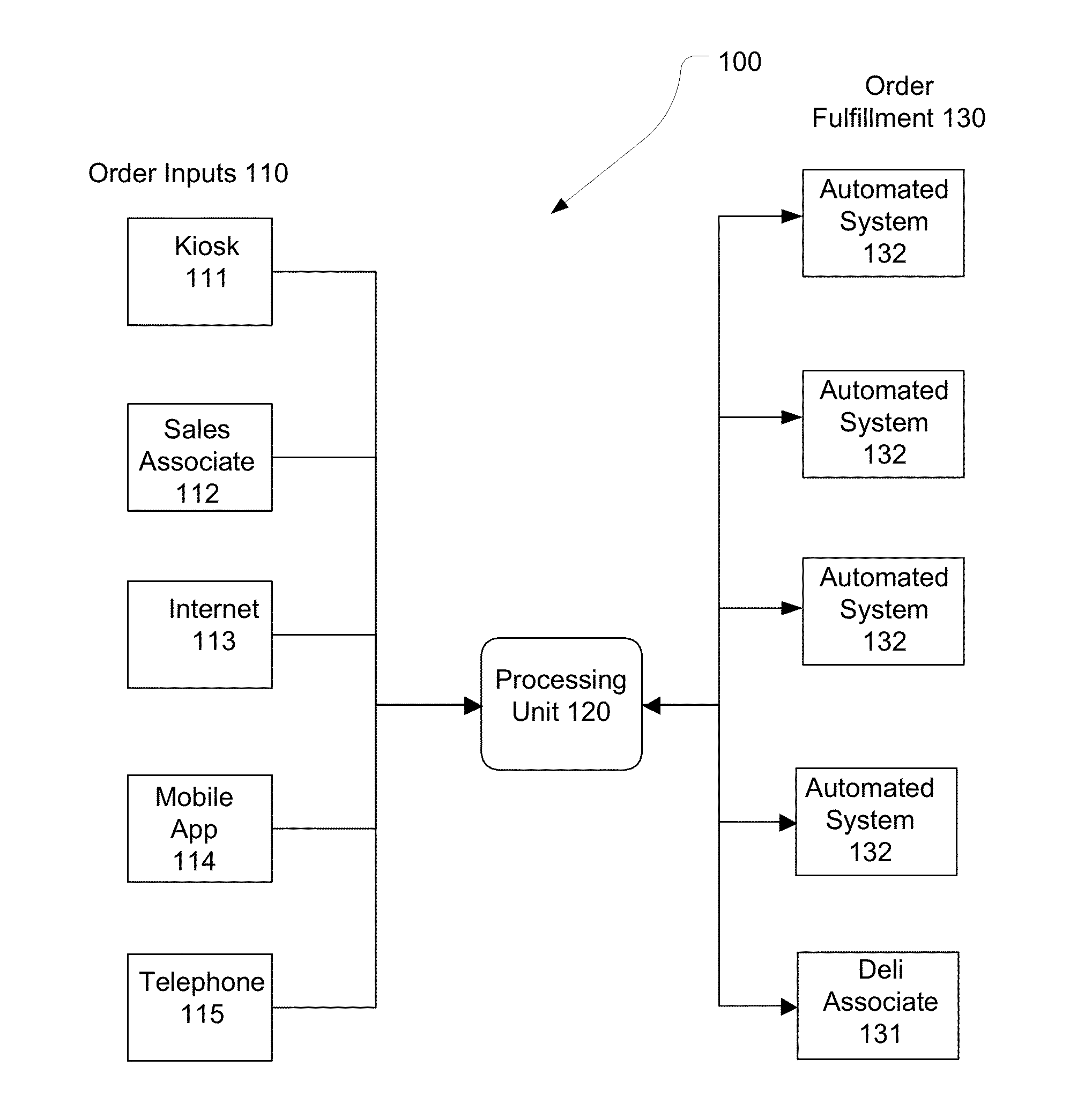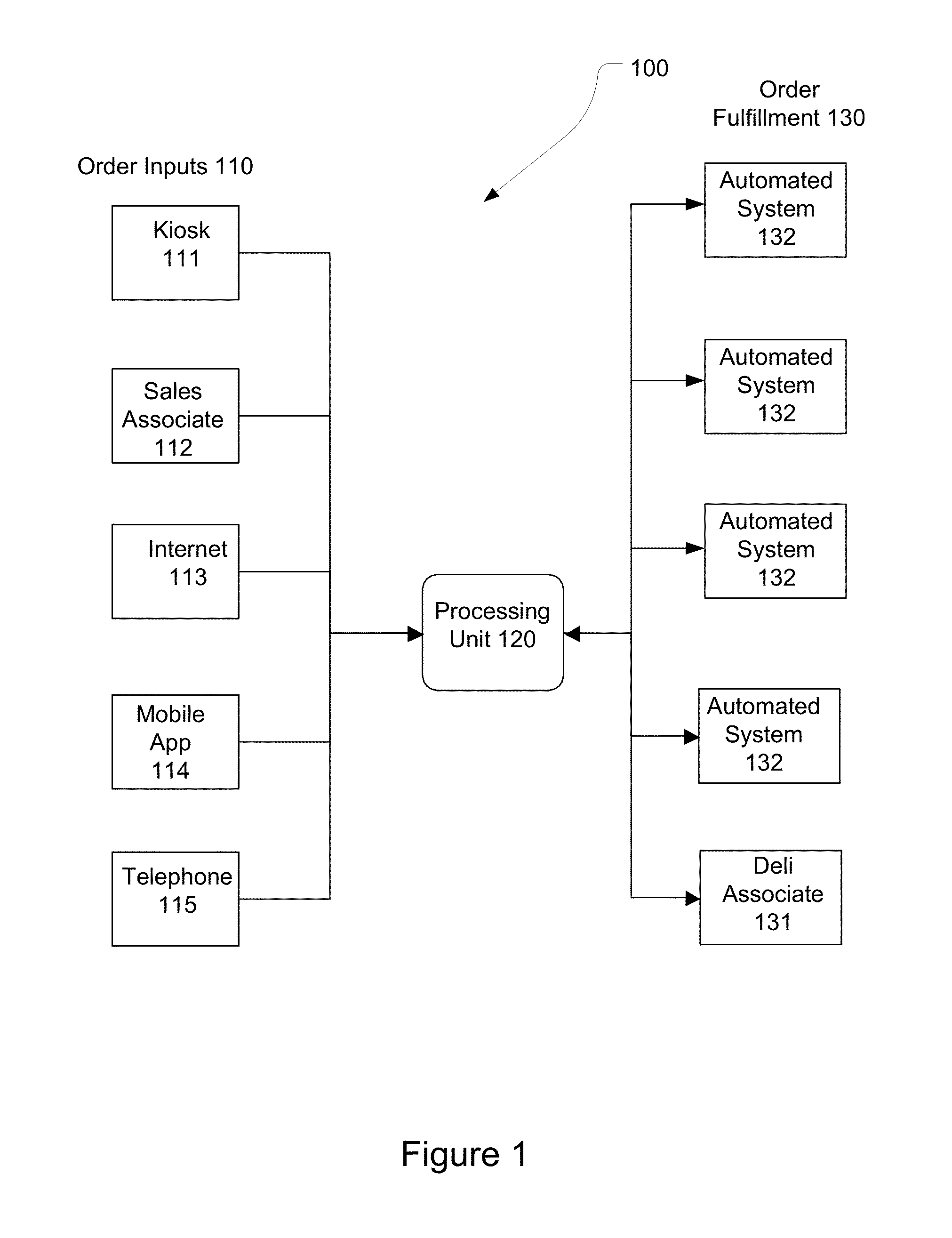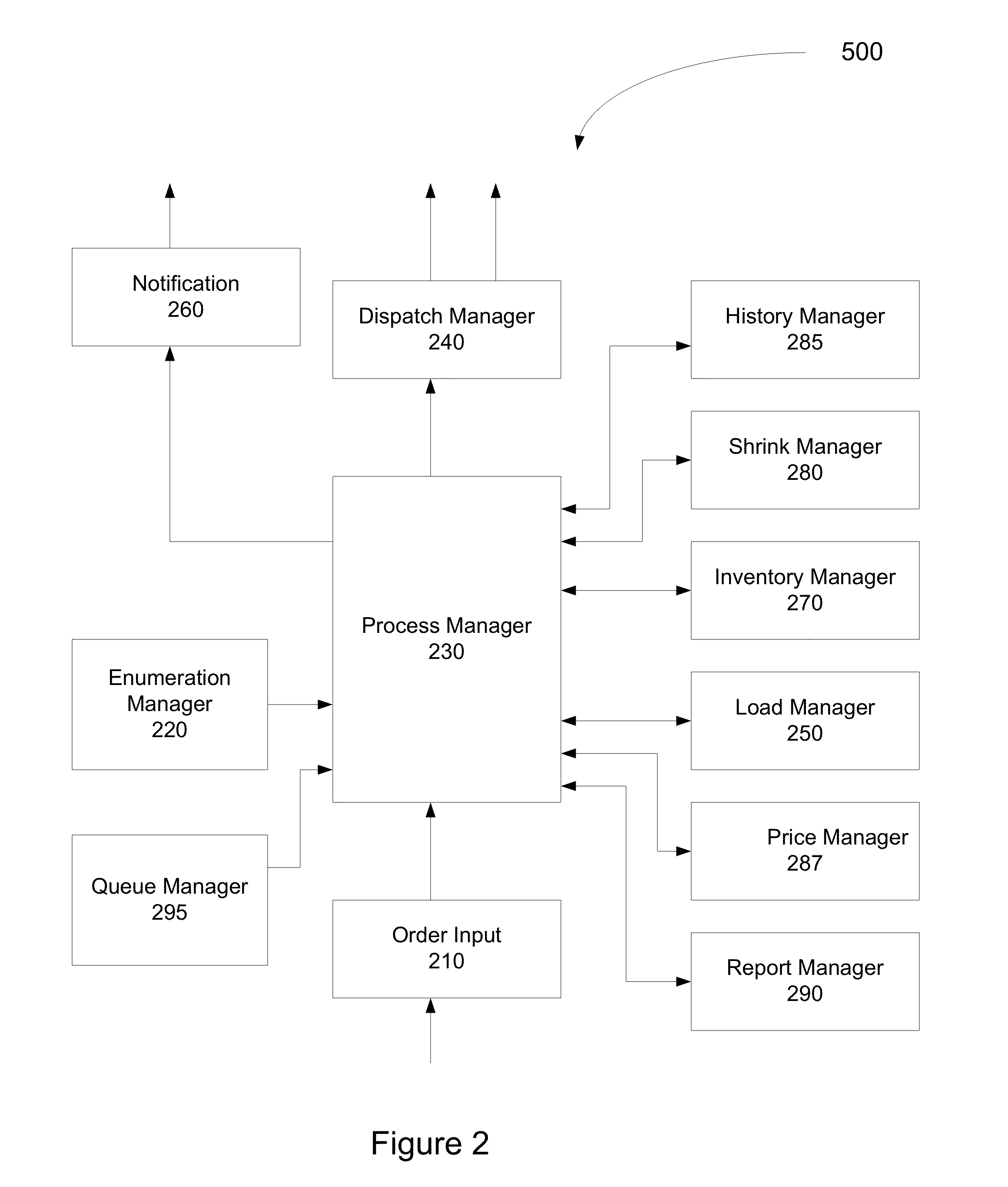Fresh Departments Management System
a management system and fresh department technology, applied in the field of fresh department management system, can solve problems such as inexact practice, inability to integrate kiosk orders with those of waiting customers, and customers returning too soon to the deli counter, so as to reduce human interaction, increase efficiency, and save labor.
- Summary
- Abstract
- Description
- Claims
- Application Information
AI Technical Summary
Benefits of technology
Problems solved by technology
Method used
Image
Examples
Embodiment Construction
[0021]As described above, the systems used for deli counters in most supermarkets, sandwich shops and commissaries have shortcomings. For the purposes of this disclosure, an “order” is defined as a single item or multiple items that are requested by the consumer or customer. An “item” is a request for a single food product, including its slice thickness, packaging preferences, etc. In the example of the deli, an example of a single item could be one half pound of roast beef, sliced medium in thickness. An example of an order consisting of multiple items may be a half pound of roast beef plus a quarter pound of honey ham plus a pound of American cheese. In addition, a customer may request special packaging, such as shingled arrangement of slices or separator sheets. “Fulfillment”, as defined in this disclosure, may comprise selecting each of the food products associated with an order, preparing or portioning, slicing, weighing, wrapping, labeling and any other functions necessary to ...
PUM
 Login to View More
Login to View More Abstract
Description
Claims
Application Information
 Login to View More
Login to View More - R&D
- Intellectual Property
- Life Sciences
- Materials
- Tech Scout
- Unparalleled Data Quality
- Higher Quality Content
- 60% Fewer Hallucinations
Browse by: Latest US Patents, China's latest patents, Technical Efficacy Thesaurus, Application Domain, Technology Topic, Popular Technical Reports.
© 2025 PatSnap. All rights reserved.Legal|Privacy policy|Modern Slavery Act Transparency Statement|Sitemap|About US| Contact US: help@patsnap.com



